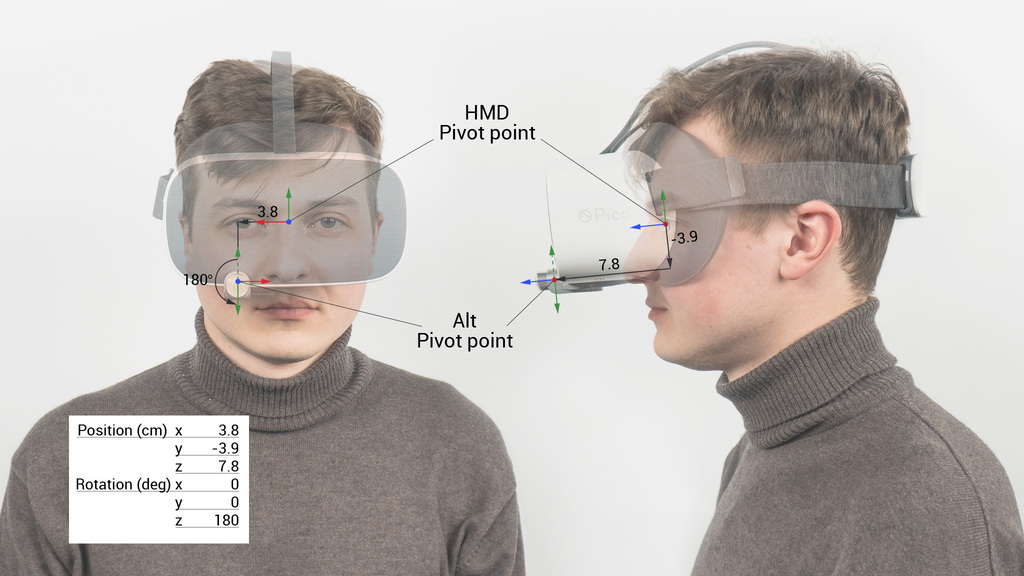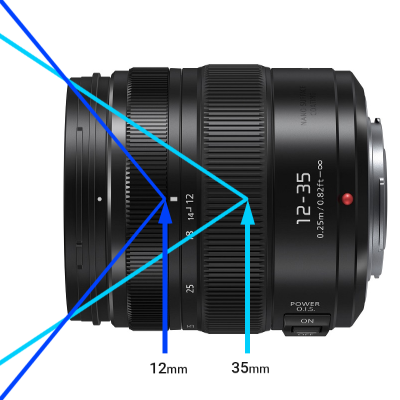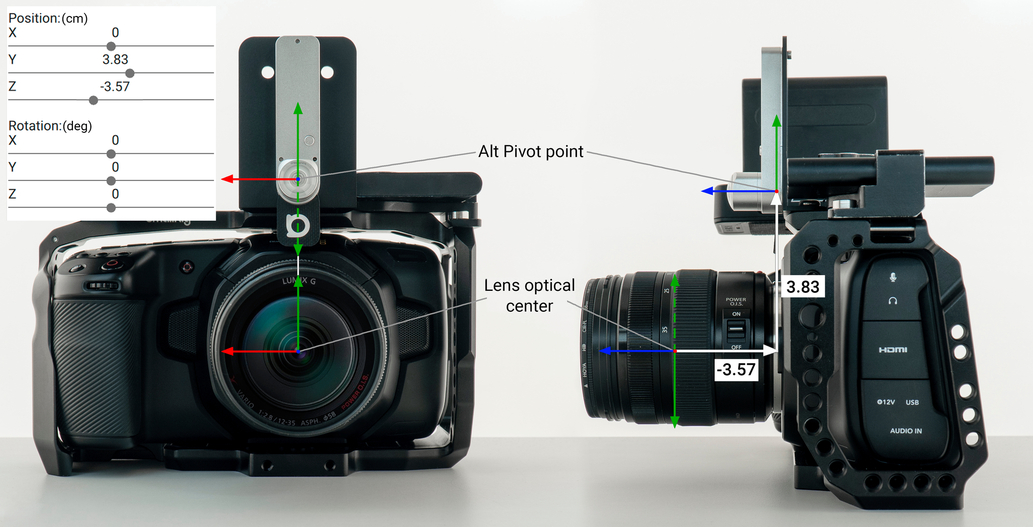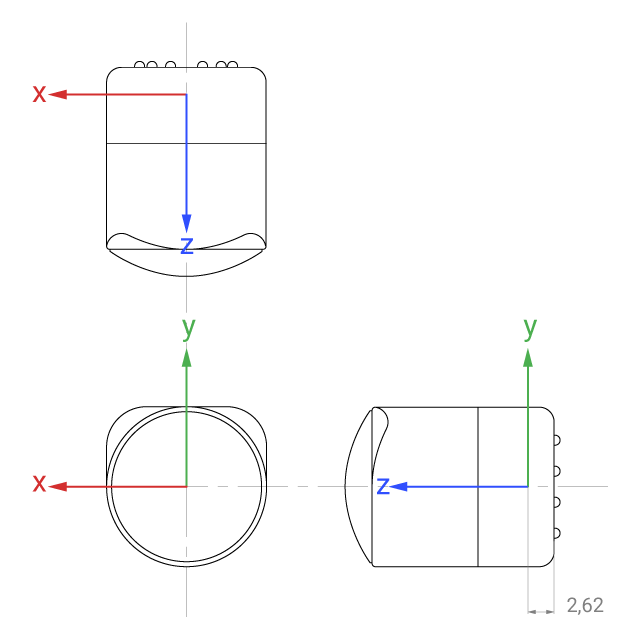Placement
Placement can be thought of as an additional transformation of the tracking data that depends on the Alt's position relative to the pivot point of the object the Alt is affixed to.
Any virtual object has a pivot point that sets the position and rotation of this object. For example, for a head-mounted display (HMD) this point is located between the user's eyes.
When you set up the Alt on a physical object, the Alt's pivot point may not coincide with the object's pivot point in virtual reality.
In this article:
- a head-mounted display's pivot point
- a gun model's pivot point
- a camera's nodal point
- an Alt tracker's pivot point
A Head-Mounted Display's Pivot Point
In this case, you have to determine the displacement and adjust the Alt's pivot point relative to the position of the point between the user's eyes.

Printable Holders for VR Headsets are a ready-to-use solution. They provide proper and safe placement for a socket with the Alt on a variety of VR Headsets.
A Gun Model's Pivot Point
The pivot point of a gun controller can be located near the handle. In this case, the Placement transforms the tracking data in accordance with the offset and rotation of an Alt relative to the pivot point on the weapon handle.

A Camera's Nodal Point
A camera's nodal point coincides with the lens optical center. How to find this point is described in article 1, article 2 and this YouTube video.
To achieve the perfect parallax effect on the zoom lens, you should create a Placement for the main focal length in AntilatencyService, and then do the calibrations for different focal lengths inside Aximmetry or Unreal.

To attach the socket to the camera, choose a convenient location on the camera body. When you choose the location for the socket with an Alt:
- the Alt tracker should be pointed towards the IR-markers of the Antilatency tracking area;
- check if the Alt and the socket do not enter the frame;
- the camera elements, in turn, should not considerably overlap the tracker's view;
- position the tracker’s center along one of the X, Y or Z axes relative to the camera’s pivot point (the lens optical center) to make it easier to measure distances late;
- if possible, the Alt tracker should be rotated to a position with a maximum field of view (FOV).

An Alt Tracker's Pivot Point
The pivot point of the Alt is located 2.62 mm from its backside.

The offset between the Alt’s pivot point and the Virtual Production socket’s backside is 5.71 mm.

To configure the Placement's parameters, use the Placements tab of AntilatencyService. You can also do this in your application.